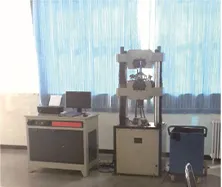Optimal MIG Welding Wire Selection for Enhanced Performance and Quality
Understanding MIG Wire A Comprehensive Guide
MIG welding, or Metal Inert Gas welding, is a popular and efficient welding process that uses a continuous solid wire electrode to join two pieces of metal together. The success of any MIG welding operation hinges significantly on the quality of the wire used. This article will explore the various aspects of MIG wire, including its types, specifications, and best practices for selecting and using it effectively.
What is MIG Wire?
MIG wire is a consumable electrode made of metal that serves as both the filler material for the weld and a means to conduct electricity. When the wire is fed through the welding gun, it becomes a molten pool upon contact with the workpiece, fusing the two metals together. MIG welding typically utilizes a shielding gas—usually composed of argon, carbon dioxide, or a mixture of both—to protect the molten weld pool from atmospheric contamination.
Types of MIG Wire
There are several types of MIG wire available on the market, each designed for specific applications and materials. The most common types include
1. Solid MIG Wire This is the most widely used type of MIG wire, suitable for welding mild steel, stainless steel, and aluminum. Solid wire is typically made from a single alloy and is available in various diameters, with the most common being 0.030 inches and 0.035 inches for mild steel.
2. Flux-Cored Wire Unlike solid wire, flux-cored wire contains a flux material within its core, which helps shield the weld area from contaminants and produces better penetration. This type of wire is particularly effective for outdoor welding and in windy conditions, as it does not require external shielding gas.
3. Metal-Cored Wire This type of wire combines the benefits of solid and flux-cored wires. It has a metal core that allows for higher deposition rates and greater productivity. Metal-cored wires are often used in high-performance applications, such as heavy manufacturing or fabrication.
4. Stainless Steel MIG Wire Specifically designed for welding stainless steel, this wire offers superior corrosion resistance. It is essential to choose the right grade of stainless steel wire to match the base metal being welded.
5. Aluminum MIG Wire Aluminum welding requires specialized MIG wires often covered with a specific coating to prevent oxidation. These wires are softer and more malleable than steel wires, making them suitable for applications like automotive fabrication or the aerospace industry.
Choosing the Right MIG Wire
mig wire

Selecting the appropriate MIG wire depends on several factors, including the base material, welding position, and the desired strength of the weld. Here are some essential considerations
1. Base Material Always match the MIG wire to the material being welded. For instance, using mild steel wire for stainless steel can result in a weak, inferior weld.
2. Thickness of Material The wire diameter should correspond to the thickness of the material. Thinner materials typically require smaller diameter wires, while thicker materials may necessitate larger diameter wires.
3. Welding Position Consider the welding position (flat, horizontal, vertical, or overhead) as this can impact the type of wire used. For vertical and overhead applications, a flux-cored wire may be more suitable due to its ability to reduce spatter and improve bead appearance.
4. Desired Weld Characteristics If you need a weld that stands up to corrosion or extreme conditions, specialized wires such as those designed for stainless steel or aluminum should be used.
Best Practices for Using MIG Wire
1. Proper Setup Ensure that the welder is correctly set up, including adjustments for voltage, wire feed speed, and gas flow rate, depending on the type of wire being used.
2. Clean the Workpieces Before welding, thoroughly clean the surfaces to remove any contaminants, such as rust, paint, or oil, which could compromise the quality of the weld.
3. Store Wire Correctly Store MIG wire in a cool, dry place to prevent contamination and oxidation. Using a spool cover can also help protect the wire from dust and moisture.
4. Regular Maintenance Regularly check and maintain the welding equipment, including the drive rollers and contact tips, to ensure smooth feeding and consistent performance.
In conclusion, understanding MIG wire is crucial for any welder aiming to achieve high-quality results in their work. By selecting the right type of wire and adhering to best practices, welders can enhance their welding operations, ensuring strong and durable joints in various applications. Whether you're a novice or a seasoned professional, investing time in learning about MIG wire will undoubtedly pay off in the long run.
-
Best MIG Welding No Gas Flux Core Solution – Easy, Portable & Clean WeldingNewsJul.08,2025
-
7018 Welding Rod 3/16 - High Strength, Low Hydrogen Electrodes Wholesale 3/32 Welding Rod 7018 Suppliers & China 7018 AC Welding Rod FactoryNewsJul.08,2025
-
High Quality MIG Aluminium Welding Wire - Wholesale Factory Prices from China SuppliersNewsJul.07,2025
-
High-Quality Gasless Aluminum Welding Wire China Gasless Aluminum MIG Wire SupplierNewsJul.07,2025
-
High Quality Ordinary Welding Rod for Pipes – Reliable China Welding Rod 7016 SupplierNewsJul.06,2025
-
Welding Wire 0.9 mm ER70S-6 Supplier Wholesale Manufacturers & FactoriesNewsJul.06,2025


